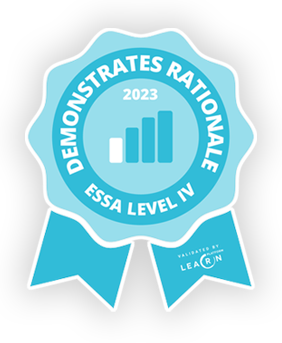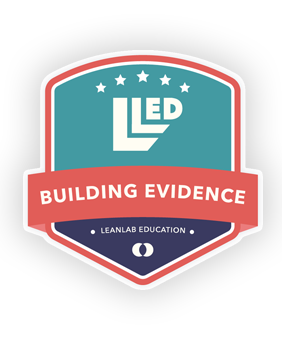When it comes to education, there are many acronyms that are thrown around. Over the last several years, STEM has been evolving as educators incorporate other subjects into the curriculum, turning STEM into STEAM and STREAM. Teaching the curriculum these acronyms denote aims to prepare students for 21st century careers using 21st century skills, but the evolution of STEM learning can get confusing. What do these acronyms mean? What are the differences between STEM, STEAM or STREAM education? What are the benefits of expanding the STEM acronym?
What is STEM?
When we use the acronym STEM in education, we are referring to four subjects–science, technology, engineering and mathematics. In STEM education, these subjects are the core of the curriculum and are taught with a more comprehensive, cross-disciplinary approach. In other words, in STEM teaching, each of the four subjects are not meant to be taught separately. Instead, these subjects are taught through project-based learning.
This type of teaching method is based in practical learning, where students are challenged to actively apply their knowledge and explore real-world problems and challenges. Project-based learning promotes the building of the four C’s: critical thinking, creativity, collaboration and communication. These four C’s are also considered 21st Century skills.
In a STEM curriculum, students explore projects that strive to incorporate some or all elements of each of the four subjects into the project. This approach promotes the building of STEM skills, such as logical-mathematical, engineering-design and problem-solving as well as challenging students’ curiosity and creativity.
Using these skills becomes integral to learning. Students learn to solve STEM-based problems and apply STEM disciplinary skills to STEM-based projects.
Common STEM projects for elementary grade levels include basic computer programming, bridge building, robot design, building a homemade compass or a pipe pulley or hand crank winch using simple materials such as straws, string or paperclips. The possibilities are numerous to get students thinking and challenge their minds to solve problems. Engaging in these types of projects encourages students to apply aptitude within each subject discipline as well as problem-solving and critical thinking.
The goal of a STEM education is to build STEM skills to broaden STEM literacy and participation, which in turn can build career pathways for students towards filling STEM related roles in the workforce.
What is STEAM?
The use of the acronym STEAM refers to the teaching of the four subjects of STEM (science, technology, engineering and mathematics) along with the added subject of arts, which can include both visual and performing art disciplines. STEAM education incorporates all the same elements of STEM but brings the arts into the mix. Adding the arts to STEM essentially jolts the creativity and innovation that STEM projects strive to achieve to a deeper, more comprehensive level.
Both STEM and STEAM education teach the four core subjects of STEM, but the addition of the arts into the teaching of these subjects elevates student learning by incorporating imagination, creativity, self-expression and out-of-the-box thinking into the curriculum. The approach is based on the thought that applying your imagination to problem solving is key to innovation, and since fostering the imagination is key to art, incorporating art into a STEM curriculum, therefore, promotes innovative thinking in students.
STEM subjects are based on applying the design/engineering method to projects, which include the process of brainstorming, design, test and redesign. This process adheres to a more objective framework with the goal being to solve the problem for an end user. The success of the project is based on the objective result of how well it solves the problem.
The arts, on the other hand, are based on the more subjective framework of aesthetically expressing an idea, thought or feeling. STEM may include subjective decisions, but ultimately the framework is that of solving a problem. In the arts there is not only one answer on how to represent an idea, thought or feeling and the answer from each individual on how well they expressed it is subjective.
Proponents of STEAM advocate for the addition of the arts for students to develop skills within both an objective and subjective framework. In theory, this produces a fuller spectrum for student learning and supports the development of stronger critical thinking and problem-solving skills, as well as creativity, collaboration and communication. Again, those important 4 C’s.
The goal of STEAM is to inspire and empower students to explore their curiosity from many different perspectives and invest in creative exploration. Proponents of STEAM advocated that this added element challenges students to come up with more thought-provoking questions and more fully apply their imaginations to connecting problem-solving to real-world solutions.
What is STREAM?
When we talk about STREAM education, we are referring to STEM with the added art of STEAM but also with the added subjects of reading and writing, which is what the R stands for in the acronym. This added R emphasizes the importance of reading and writing to the overall education of a student. Proponents of STREAM education emphasize a more well-rounded curriculum that supports the development of literacy, creativity and critical thinking skills and prepares students for careers in the real world.
Communication is integral to living, playing, working and thriving in the real world amongst other humans. Reading and writing skills are foundational to communication in both teaching how to communicate but also the why behind communication. In a technology driven-world, STREAM education supports students in not only solving problems and applying STEM skills, but it gives them the ability to:
- Solve those problems while taking human needs and feelings into consideration
- Communicate their ideas and solutions on a human level
- Collaborate with colleagues to put solutions into action
The goal of STREAM education is to not only acquire aptitude in STEM subjects but to understand the humanitarian side of using STEM skills and their impact on the real-world. STREAM is very much the same as the teaching of the 3 R’s (reading, writing and aRithmatic). Arithmetic in the old adage of the 3 R’s always included science and technology. STREAM uses these same principles but with the project-based learning methods of a STEM education.
STEM vs STEAM vs STREAM: The Main Differences
STEM education takes an interdisciplinary and integrated approach to teaching science, technology, engineering and math to build aptitude in these subjects as well as critical thinking and problem-solving skills in students. By adding the arts, STEAM teaching strives to take the foundation of a STEM curriculum and expand it to include the subjective thought processes inherent to art disciplines. It allows for the addition of imagination and creativity to support innovation and self-expression as explained above. STREAM education adds reading and writing to the STREAM curriculum and expands it further to take a more comprehensive whole-child approach. By adding reading and writing, the human side of STEM is explored more fully and students learn to communicate their ideas and solutions.
The Pros of Expanding STEM to STEAM and STREAM
STEM is focused primarily on teaching STEM subjects through an integrated approach. STEAM focuses on adding arts to the integration to more fully develop the critical-thinking, problem solving, creativity and curiosity skills STEM is designed to teach. STREAM takes the approach one step further to bring in the human-side of solving problems, thinking critically and applying your creativity and curiosity.
Expanding STEM Expands the Learning of 21st Century Skills
Building 21st century skills or the 4C’s, as explained earlier, are designed to help students succeed in the 21st century workplace. These skills fall into three main categories:
- Learning
- Literacy
- Social
21st century learning skills include critical thinking, creativity and innovative problem-solving. Literacy includes an understanding of how information is gained and processed in the digital age, how to communicate through different media and across disciplines, cultures and audiences, as well as literacy of emerging technology. Social skills include collaboration, interpersonal communication, leadership and self-expression.
Any approach to education needs to foster the development of these valuable skills.
The Importance of STREAM Education and 21st Century Skills
STREAM schools take the whole child into consideration. STREAM teaching takes the approach of building 21st century skills from many different angles, not only through acquiring the technical skills of STEM but with the imagination skills of the arts and the human-level communication of reading and writing.
By taking the whole child into consideration proponents of STREAM education advocated that it increases student participation and enthusiasm for learning as it can appeal to many different kinds of learners, not only those who have a natural aptitude for STEM subjects, but opens the door to STEM for those who may struggle in these subjects or lack the confidence to engage fully in learning them. STREAM allows many different types of students to engage in STEM learning and develop STEM-related skills. STREAM allows for more students to gain the benefits of a STEM-based education.
STREAM education promotes the development of lifelong skills in students that assist in connecting them to the real-world of humans. It also fosters skills in building sustainable relationships within that real-world. This is vital in helping young people grow into well-rounded, productive and healthy adults.
The Cons of STEM and STREAM
When looking at STEM vs STEAM vs STREAM, the biggest disadvantage is the same as most discussions about educational methods. Not everyone agrees on what is best. Some advocates for STEM are not convinced that adding arts, and reading and writing necessarily enhance the curriculum, while others are convinced it does. There are proponents of STEM teaching who see the addition of these other subjects as a dilution of STEM’s primary focus of teaching science, technology, engineering and math. Some STEM advocates see the addition of other subjects more of a promotion of those subjects instead of a promotion of 21st century skills.
Providing students with a quality education, however, should not come down to a choice between STEM or STREAM, but one that will assist students in building the necessary 21st century skills to fill meaningful roles in the ever-evolving 21st century workplace. The overall benefits of a STREAM education to fulfill this goal cannot be overlooked.
Final Thoughts: STREAM EDUCATION
The difference between STEM and STREAM comes down to focus. STEM education focuses on projects that take an integrated approach to STEM subjects. STREAM education focuses on integrating a whole child approach to teaching, as explained in this article, to STEM subjects and building vital skills in students that allow them to succeed not only in school but in life too.





